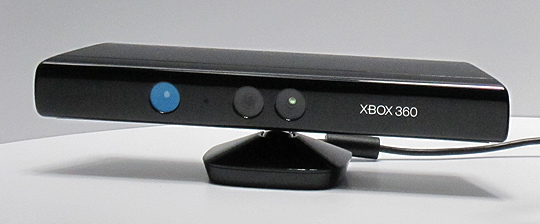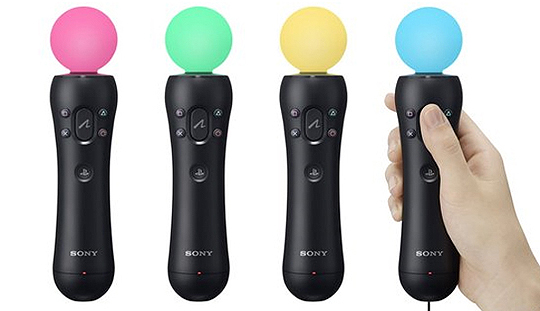
Is one better than the other? Are they even worth comparing? Are they even worth purchasing? Sony and Microsoft have both released their responses to the plethora of new gamers created by the Nintendo Wii, and now that both beasts are in the wild, they can finally fight to the DEATH.
The Wii attracted a whole lot of new people who Sony and Microsoft didn’t even realize were interested in playing video games. Now the two want in on that action. It took them four years to get their products out, and for all we or they know, the main demographic of their creations — the casual gamer — may have already packed their Wii into the closet, putting their brief stint in the world of video games behind them. It may be up to the casual consumer to decide the fate of the Playstation Move and the Kinect, but more than likely, the hardcore gamers will be the ones to ultimately call the match. They’re the ones who already have the PlayStation 3 and the Xbox 360, so their investment is little compared to the mothers and grandparents who would have to start from square one. Are they worth the investments? Or do you just wait quietly in the basement until the storm of motion control popularity passes, and you can emerge from underground, controller gripped tightly in both hands, ready to take a seat and move as little as possible?
The Kinect
The Kinect is certainly a strange device, and an expensive one. With an asking price of $150, plus your copy of Dance Central (the only game I can confidently recommend at launch), you’re looking at a price tag that could have easily bought three copies of Call of Duty: Black Ops.

Does it work?
The Kinect works, which is perhaps the most important selling point of the device. It’s not perfect, but when it works, it works well, and it works more often than it doesn’t. If space is limited in front of your television, you can go ahead and choose the Move, because the Kinect requires about six feet of open rug, in the same sense that your wireless controller requires batteries. It’s not an option.
Does it blow your mind?
The experience offered by the Kinect — and it can certainly be defined as an experience — is novel and new. It will inspire childlike wonder the first time you see your avatar, that likely looks like you, act like you… without the help of a plastic device in your palm. It’s like seeing motion capture play out right in front of you, or looking into a mirror that displays the cartoon world version of yourself. Doing things like lifting your leg into the air, or arbitrarily waving your arms about will inspire fits of unexplainable giggles, and it takes a long time for the effect to wear off.
Is it the same as the Wii?
The lack of a controller makes it feel markedly different from playing a Wii game. Motion control is still an appropriate moniker for the play style, but it seems like it could fit into a category all its own. Body control, perhaps.
Verdict
The prospects offered by the Kinect are exciting. It’s a creative approach to playing video games, and the technology does work as advertised. What it doesn’t do, though, is offer complete one-to-one, accurate gameplay. Games designed for the Kinect must be created with the understanding that lag is an unsolvable complication of the gaming process. This is not a deal breaker, as many games can still be quite fun without the need for absolute accuracy. But games that require accuracy, i.e. games loved by the harcdcore players, may be impossible. I dearly hope that I can be proven wrong, but in its current state, I can not imagine playing something like the recently announced Steel Battalion comfortably on the Kinect. For the player not interested in dancing or jumping in their living room, a Kinect purchase may be reserved for far in the future or simply out of the realm of possibility entirely.
The Move
The Move offers multiple price points for multiple different device packages, which is already going a long way to confuse consumers. You can buy the Move controller, the camera, and the Wii Sports equivalent pack-in Sports Champions for $100, or you can buy the Move controller by itself for $50, as long as you already have the camera. There is also the $30 navigation controller, but you can use a regular controller in place of that one. For the consumer already uncomfortable hanging out in the video game section, that explanation is a confusing hurdle to stumble over.

Does it work?
It absolutely works, experiencing very little lag. Manipulating things like swords feels great, and looks correct. Very rarely is the illusion of complete one-to-one control broken. Your on-screen character hardly ever acts erratically or experiences digital convulsions. When it comes to the world of virtual interaction, with digital elements superimposed into our reality with games like Eyepet, the illusion is difficult to maintain. The PlayStation Eye is a low-quality camera, being easily outdone by many cell phone cameras. What this leads to, is our world viewed through a blurry low-resolution lens, with a sharp, high resolution virtual thing superimposed on top of us. Also, the lighting is fickle, and difficult to set up properly.
Does it blow your mind?
The PlayStation Move works well, but the initial awe of the device was used up four years ago when you first saw an onscreen avatar reflect the physical action of the controller in your hand. The best way to describe the initial response to the Move is to compare it to the purchase of a new computer. It looks the same as what you are familiar with, it feels the same as what you are familiar with, but everything looks a bit sharper, and it all runs significantly faster.
Is it the same as the Wii?
In quite literally as few words as possible — yes. It doesn’t do anything the Wii has not done already, but it cannot be denied that it does it a whole hell of a lot better. It seems like it could deliver on the very first promises offered when the first trailers showing off the Wii remote were shown.
Verdict
The Move came out with the requisite number of terrible titles that were clearly attempting to create a profitable experiment with the technology, under the guise of the release date. There have already been some interesting, successful experiments with the controller, that fall under the umbrella of hardcore gaming. Heavy Rain, Resident Evil 5 and the recently released R.U.S.E. all take advantage of the Move controller pretty well. The Move is not necessarily the preferred control method for these games, but they do work, which is important, as well as possibly indicative of what is to come. For these aforementioned titles at least, the Move control is optional. Is there ever going to be a hardcore game requiring the Move controller? Or will it always be a not necessarily preferred option of control? The biggest take away from the Move, ultimately, is that it is accurate. Accuracy means that it could work well in a game that needs accuracy. I don’t know when that game will be available, and I don’t know if Move will be the only control option, but I do believe that it will one day exist, which speaks highly of quality of the Move
The verdict to end all verdicts
To make a confident call about which one is better than the other is impossible. The gate just dropped, and the horses just started building up speed for their gallop. We can’t call the race yet, but we can make an informed decision.
The Move seems to have more capabilities when it comes to realistic applications in hardcore games, but it doesn’t do anything new. It is basically a better version of the Wii.
The Kinect’s hardcore gaming applications seem limited at best, but it’s a whole new gaming experience that feels fresh and exciting.
It all comes down to personal preference, and for this guy right here, I will take new brand new experience over updated familiar one any day. The Kinect in my household received more playtime over the weekend following its release than the Move has in the entire 2 months since it came out.
I’m excited to see where both devices are heading, and look forward to the future releases for both, but right out of the gate, and perhaps more importantly, right before Christmas, the Kinect wins this round. Ask me again in a year, though; I might have a different answer.

















